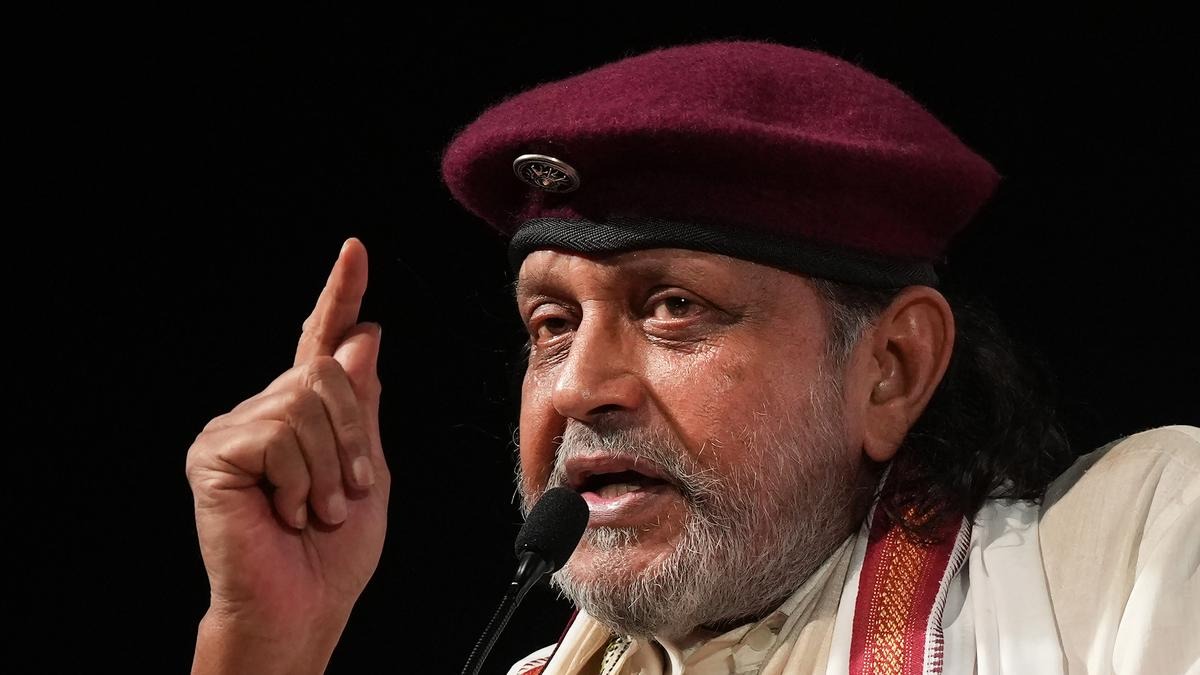In a recent announcement, the Information and Broadcasting Minister declared that veteran actor Mithun Chakraborty will be honored with the prestigious Dadasaheb Phalke Award, India’s highest accolade in cinema. The award, named after the father of Indian cinema, Dhundiraj Govind Phalke, is given in recognition of outstanding contributions to the growth and development of Indian cinema. With a career spanning over four decades, Mithun Chakraborty has established himself as a Bollywood icon, known for his versatile roles, dance moves, and enduring influence on Indian cinema. This recognition is not only a testament to his immense talent but also to the significant cultural impact he has had on the Indian film industry. In this article, we will explore Mithun Chakraborty’s remarkable journey in the world of cinema, his contributions to Indian cinema, and why the Dadasaheb Phalke Award is a fitting tribute to this legendary actor. Mithun Chakraborty, affectionately known as “Mithun Da,” has had one of the most extraordinary careers in Indian cinema. Born Gouranga Chakraborty on June 16, 1950, in Kolkata, West Bengal, Mithun’s journey into the film industry was not without its challenges. He made his acting debut with the art-house film Mrigayaa (1976), directed by Mrinal Sen. This debut performance was a critical success and earned him the National Film Award for Best Actor. From that point on, Mithun’s career took off, and he went on to become one of the most beloved actors in the country. What set Mithun apart was his ability to transcend genres and film industries. He was a part of mainstream Bollywood but also ventured into parallel cinema, regional films, and even worked in international projects. His versatility as an actor enabled him to explore a wide range of roles, from action-packed characters to emotionally charged performances, and even comedic roles that showcased his impeccable comic timing. One of the key milestones in Mithun Chakraborty’s career came in 1982 with the film Disco Dancer. Directed by Babbar Subhash, Disco Dancer catapulted Mithun to superstardom. His portrayal of Jimmy, a street performer who rises to fame as a disco dancer, not only struck a chord with audiences but also revolutionized the way dance was perceived in Bollywood. Mithun’s signature dance moves and his magnetic screen presence earned him the title of “Disco King” and made him an enduring icon of popular Indian cinema. Disco Dancer became a massive commercial success not only in India but also internationally, particularly in the Soviet Union, where the film developed a cult following. The song “I Am a Disco Dancer” became synonymous with Mithun’s persona and contributed to the global recognition of Bollywood. With Disco Dancer, Mithun set a new trend in Bollywood, making dance an integral part of Hindi films. His unique dance style and energy made him a youth icon of the 1980s, inspiring generations of aspiring dancers and actors. While Mithun Chakraborty gained fame for his dance-based roles, his acting career was much more diverse. Over the years, he took on roles in a variety of genres, ranging from action films to intense drama and comedies. His ability to adapt to different kinds of roles allowed him to maintain his relevance over decades, something that few actors in the industry have managed to do.
Veteran actor Mithun Chakraborty to receive Dadasaheb Phalke Award: I&B Minister
In films like Tahader Katha (1992), where he portrayed a mentally and emotionally scarred freedom fighter, and Swami Vivekananda (1998), where he played the role of the revered spiritual leader Ramakrishna Paramahamsa, Mithun showcased his ability to take on complex, layered characters. His performance in Tahader Katha earned him another National Film Award for Best Actor, further solidifying his status as one of India’s most talented and versatile actors. Mithun also excelled in action films, becoming a staple of the genre in the late 80s and early 90s. Films like Ghulami (1985), Agneepath (1990), and Yudhpath (1992) allowed him to portray tough, gritty characters, and his action-hero image made him a favorite among mass audiences. His towering screen presence and ability to perform high-octane action sequences with ease ensured his longevity as a superstar in Bollywood. In addition to his work in Bollywood, Mithun Chakraborty made significant contributions to regional cinema. He has acted in numerous Bengali films and has been an integral part of the Bengali film industry. His collaborations with celebrated directors like Buddhadeb Dasgupta in films like Tahader Katha and Kalpurush (2008) showcased his ability to excel in regional cinema, earning him critical acclaim beyond the mainstream Bollywood audience. Mithun’s regional influence wasn’t limited to Bengali cinema alone. He worked in films across multiple languages, including Odia, Bhojpuri, and Tamil, further expanding his reach and influence. His ability to transcend linguistic and cultural barriers made him a pan-Indian actor, beloved by audiences across the country. Beyond his film career, Mithun Chakraborty has also made a name for himself as a successful entrepreneur and philanthropist. He is the founder of the Monarch Group, a business conglomerate involved in hospitality, education, and entertainment. Mithun’s hospitality ventures include hotels and resorts that cater to both Indian and international tourists. As a philanthropist, Mithun has been involved in various charitable causes, particularly in the area of education and healthcare. He has supported several initiatives aimed at providing education to underprivileged children and has been actively involved in medical camps for those in need. His philanthropic work, combined with his stardom, has made him a role model for many. Mithun Chakraborty’s love for dance never waned throughout his career, and he continued to give back to the industry by mentoring the next generation of dancers. His role as a judge on the popular dance reality show Dance India Dance further cemented his status as a dance icon. Mithun’s presence on the show, where he was fondly called “Grandmaster,” gave aspiring dancers a platform to showcase their talent. His encouraging words and guidance helped shape the careers of several young dancers who went on to become successful choreographers and performers.
